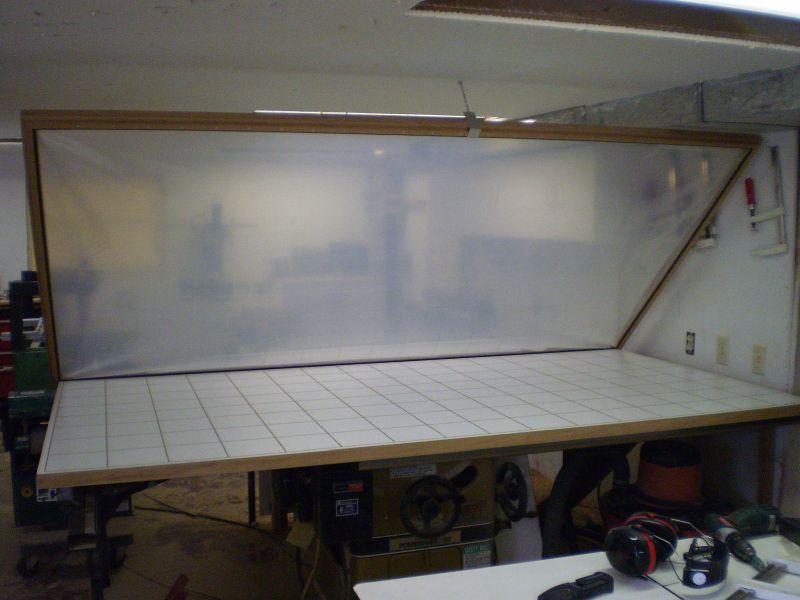Question
I'm looking into purchasing a vacuum bag and pump that will do up to 4x10 sheets (aka 49x121). Does anyone have any recommendations and approximate cost? What glue should I use?
Forum Responses
(Cabinetmaking Forum)
From contributor L:
We've got a system from Vacuum Pressing Systems. You can get all the info you need from them, good people. A lot will depend on your intended use. We started with their "Hi-Flo" pump and a 4x8 urethane bag. Worked well but we needed to get more parts through per day so bough a Vinyl bag too (less expensive.) That was a mistake as it was harder to seal and not nearly as durable. As long as the seal was good the pump could maintain two bags. We made a grid sheet for flat or relatively flat parts. Buy some of their plastic mesh to put under the vacuum port. There needs to be a path for the air to get to the pump. We used this system a lot and it was kind of a pain to load the bags. We bought a frame/membrane and built a 5x10, table. It was much easier to load.
Employees tend to be careless about sharp corners so our membrane has quite a few patches. The corners are starting to leak and the original pump can't keep up. Sometime along the way it seemed like the pump was running really hot. We installed a muffin fan in its case to help cool it. Since our CNC runs pretty much all day every day we decided to tap into its vacuum system. We ran a 2" PVC line between them. You should see how quickly a 40hp pump pulls the bag tight! If you are vacuum forming on a 3D mold be forewarned, your first try will probably collapse from the atmospheric pressure. We've had projects too big for the 5x10 bag so have just used some 6 mil film from the hardware store. Sealing it isn't all that hard but you will have leaks around the intake fittings fairly often. That's where the 40hp pump helps. The bag won't last, and is best considered disposable after one or two uses. Keep a roll of duct tape handy. Vacuum Pressing System also sells glue and other supplies that work better than typical wood glues for larger glue ups. They have some great videos that I recommend. There are other sellers that have good looking products also.
I have never personally used a vacuum bag but a company I used to work for laid up some sheets for me with theirs. They used some kind of glue and applied it to both the MDF and the veneer. I remember they had to have one sheet with a grid pattern cut into it, but I donít remember how big the grid needs to be - thoughts? I believe I also need another sheet of MDF to go on top of the veneer, is that correct? Does that one need to have a grid pattern too?
Any other advice? Which model pump would be good for an occasional user? I donít want junk, but I also donít need to spend several thousand either. What material of bag is going to last me the longest? Is it easy to clean up glue off the inside of the bag?
The top sheet doesn't need a grid but the vacuum inlet needs to have a connection to the bottom grid (plastic netting). "What material of bag is going to last me the longest? Is it easy to clean up glue off the inside of the bag?" I only have experience with two materials: Urethane is much better than Vinyl. Itís tougher, has more stretch and it is longer lasting. Glue doesn't stick to the bag really tight. For the bag cleaning, turn it inside out. The least expensive vacuum generator is compressed air operated. I don't know how much air they can draw or how much compressor they requite. We have a small one on a stand that holds parts for routing or cleanup.
As far as buying I would generally recommend getting the best setup you can afford. If you see yourself doing large glue-ups or multiple bags at a time, you'll want a bigger pump that can evacuate the air quickly! I run an electric Press made by Mercury Vac Systems with a 1/2 hp Gast pump which works pretty well. If you have the time and are mechanically inclined you could buy all the parts and put one together for significantly less than what an off-the-shelf model costs. There are smaller versions available as well as the kind that work off of compressed air. Do your homework and read up as much as you can before you start spending money.
